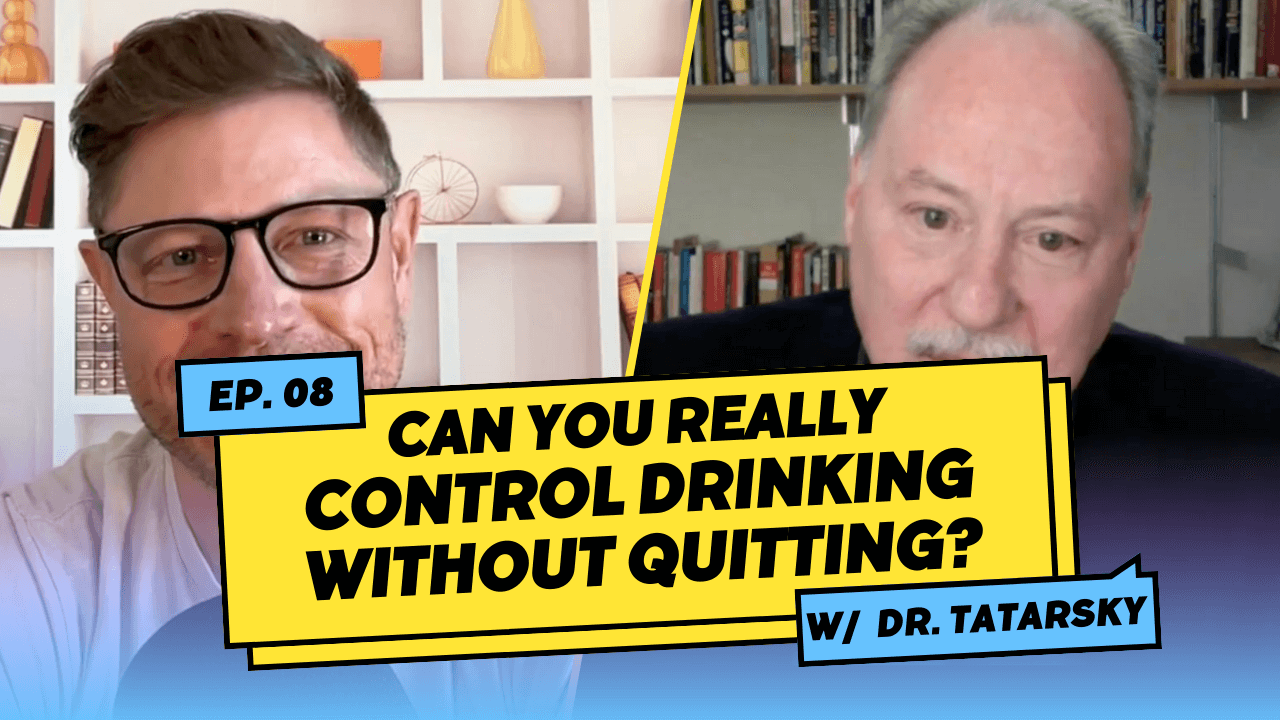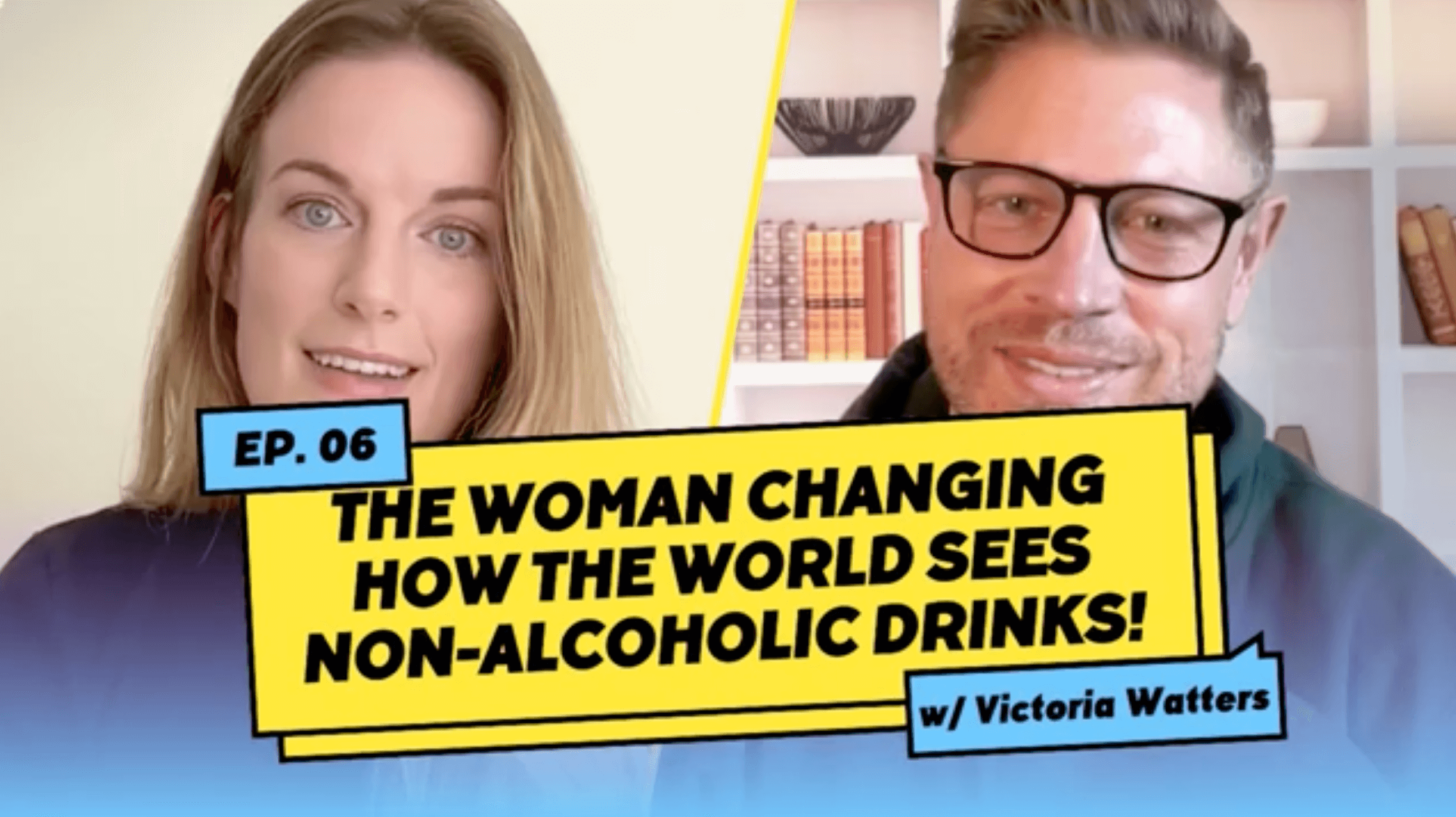Last Updated on September 15, 2023
Have you tried cutting back on your drinking with sheer willpower? If you’ve found that willpower alone isn’t usually enough to create a sustainable change, you’re not alone.
In fact, Sunnyside’s State of Drinking in the US report has found that 47% of people who drink alcohol wish to cut back, but less than half of those people actually do.
Drinking itself creates such a feel-good experience, and it’s so easy to get carried away when you’re having the time of your life with your friends. Thus, most of us need more than just willpower to reduce our alcohol intake in a sustainable way.
The determination to improve your relationship with alcohol should be combined with the right tools and strategies and a willingness to try different approaches to achieve your goals. With this combination of perseverance and strategic structures, it’s definitely possible to build healthier drinking habits that last a lifetime.
Let’s explore 16 different psychology-backed tips and strategies you can use, so you won’t have to rely on pure willpower to help you drink less alcohol.
Build your personalized drinking plan1. Set up limits and track your drinking.
The most important step to creating safer drinking habits is to track how much you currently drink and set boundaries or goals that will help limit how much you drink. Some research has found that goal-setting for both abstinence and moderation can lead to lower overall alcohol consumption [1].
Jot down your daily or weekly drinking limits and which days you’re allowed to drink. Whenever you do drink, take a quick note of how much alcohol you’ve consumed. This gives you a clear and achievable goal to work toward and allows you to see your progress as you gradually cut back on your intake.
A drink-tracking app like the Sunnyside app can help you create action plans, set weekly limits, and track your daily alcohol intake. This makes the process quicker and simpler, plus you’ll receive daily reminders and prompts to key in how much alcohol you’ve had.
2. Bring just enough money for a couple of drinks.
Make it a point to pay with cash, and set a budget for the night. When you’re getting ready to head out, bring along just enough money to cover a few drinks for the night (and maybe a ride home).
3. Surround yourself with people who have the same goals and mindset.
Peer pressure can take different forms and may even show up as friendly jokes and banter. In any case, research has noted that peer pressure affects all age groups, not just young adults, and can contribute to overindulgence [2].
You shouldn’t have to feel like drinking is the only way to fit in. Surround yourself with friends who respect your no’s and boundaries. But the best way to take peer pressure out of the picture is to connect with friends or a community who share the same wellness goals.
4. Get creative with non-alcoholic and low-alcohol alternatives.
Request a low-alcohol version of your favorite cocktails or ask your bartender to concoct a low-alcohol beverage based on your flavor profile of choice.
You can also experiment with creating low-alcohol or non-alcoholic beverages at home. A simple way to do this would be to swap out full-strength spirits for lower-ABV alternatives to add to your homemade cocktails.
There are numerous low-alcohol and non-alcoholic wines, spirits, beers, and aperitifs available in the market, so you won’t have to worry about a lack of options.
5. Make it difficult to access alcohol.
“Out of sight and out of mind” might be true in this case.
Don’t leave a bottle sitting around your kitchen counter or have a few cans of beer ready to go in your refrigerator. Instead, keep your alcoholic beverages somewhere harder to access, such as your basement or garage.
6. Re-cork opened wines.
You don’t have to finish any opened bottles of wine on the same day.
Contrary to popular belief, wines can be stored for a few days with the right techniques. You can plug in the original cork or purchase a wine stopper and store the opened bottle in the refrigerator to keep the wine fresh for longer.
Take the 3-min quiz7. Avoid places that stir up your cravings.
Researchers have found that alcohol cravings are higher at parties, pubs, or restaurants [3]. Of course, you don’t have to cocoon yourself away from social gatherings. What might work is suggesting a different restaurant, spot, or activity that does not necessarily involve swigging.
That said, some people may experience similar levels of alcohol cravings even when they’re home [3]. In this case, keeping your home free of alcoholic beverages could help prevent overindulgence.
8. Enlist the help of an accountability partner.
Let one or two trusted family members and friends know of your goals and plans to cut back. If they’re supportive, you may ask if they’re happy to play the role of your accountability partner.
An accountability partner is someone who will keep you in check when you’re struggling and celebrate all your big and small wins with you as you get closer to your goals. Sunnyside can act as that accountability partner, simply take the 3-minute quiz and build a personalized drinking plan that fits your needs.
9. Have a healthy wind-down routine.
Many people drink alcohol before bed to help them relax and fall asleep faster. That effect, though, is only temporary, and alcohol can negatively impact overall sleep quality and duration, especially later on during the night [4].
Start by gradually reducing your nighttime alcohol intake. At the same time, focus on establishing a healthier wind-down routine.
This could include any activities that help you relax, such as performing light stretches or simple yoga, carrying out breathing exercises, reading a book, taking a hot bath, or having a warm bowl of oatmeal.
10. Make a plan for when cravings hit.
Don’t focus on what you cannot do; focus on what you can do. Instead of constantly thinking, “I must not drink alcohol,” try to figure out what activities you can do in place of drinking.
That could be taking a walk, playing your favorite video game, picking up a novel, or heading to the farmer’s market.
11. Delay your first drink.
Enjoy the night while it’s young. Dance your heart out, engage meaningfully with friends, meet new people, and munch on some snacks. Try to delay your first drink as much as possible so you’d spend less time drinking.
You can also set a timer for every hour or so after your first drink so you don’t exceed the limit of having more than one drink per hour.
12. Keep yourself occupied during parties.
Pacing yourself can be difficult, especially when the main attraction at the event is the booze and wine. Try to take your mind off the alcohol by sparking new conversations and staying engaged with other people in the room.
If you’re feeling awkward or bored, have a non-alcoholic drink to sip in place of a boozy beverage.
Start your Free 15-day trial13. Enjoy your drinks.
Order an alcoholic beverage you actually enjoy. Stay present in the moment as your drink, and pay attention to the unique smell and flavor profile of each drink.
Instead of downing shots, immerse and indulge in the drinking experience. And while you’re at it, enjoy the company and atmosphere around you.
14. Pre-determine when you’re going to leave.
Whenever possible, pre-plan when you’re going to head back home. As the party gets louder and the booze hits harder, it can be challenging to keep the boundaries you’ve had in place.
Of course, this doesn’t have to be the case for every event, especially if you’re having a great time. If you intend to stay late, set reminders on your phone and bring just enough cash for a few of your favorite tipples.
15. Practice self-care.
Self-care doesn’t have to be extravagant or glamorous. Taking little steps each day to care for your body, mind, and soul can be just as rejuvenating.
Stress is one of the biggest trigger factors for drinking, as shown by research and Sunnyside’s State of Drinking in the US report [3]. So whenever possible, dedicate some time during your day to carry out simple activities that recharge your body and nourish your mind.
While it is much easier said than done, being intentional in building a personalized self-care routine can help you cope and recover better from stressful events in life. This might help reduce stress drinking, especially if you’ve noticed that your cravings hit the hardest when you’re in an anxious state of mind.
16. Get support online.
This self-improvement journey doesn’t have to be a lonely one.
Suppose you can’t find a physical support system to lean on. In that case, the Internet opens the door to countless opportunities to connect with an online mindful drinking community that can support, encourage, and give you advice along the way.
A great place to start is Sunnyside’s Facebook Group for Mindful Drinkers.
Sunnyside’s Structured and Expert-Driven Approach to Changing Your Drinking Habits
Sunnyside is a mindful drinking app that utilizes science-backed habit-change techniques that are reviewed by a panel of experts to help you improve your drinking habits in a sustainable way.
Apart from tracking your drinking through the Sunnyside app, you can also seek advice from trained, real-life coaches and gain access to personalized weekly plans based on your preferences and goals.
At Sunnyside, we create a judgment-free zone for you to equip yourself with the tools and knowledge you need to build a healthier relationship with alcohol!
Take the 3-minute quizReferences
[1] https://www.ncbi.nlm.nih.gov/pmc/articles/PMC9599893/
[2] https://bmcpublichealth.biomedcentral.com/articles/10.1186/s12889-020-09060-2#Sec34



